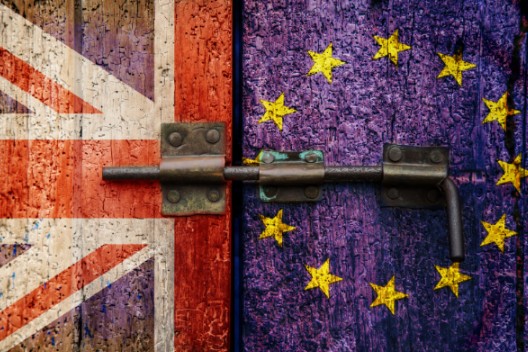Steel at the Crossroads: The EU-UK Tariff Rift and Its Industrial Reverberations
Introduction: A Strategic Shock to the Steel Spine of Europe
In late 2025, the European Commission unveiled a sweeping proposal to overhaul its steel import safeguards slashing tariff-free quotas by nearly half and doubling out-of-quota tariffs to 50%. For the United Kingdom, whose steel industry sends nearly 80% of its exports to the EU, this announcement landed like a hammer blow. The move threatens to upend a fragile post-Brexit trade equilibrium and has triggered what industry leaders are calling an existential crisis for British steel.
The EU’s rationale is rooted in protecting its domestic producers from global overcapacity and redirected flows of cheap steel, particularly from China, Turkey, and India. But for UK steelmakers already grappling with high energy costs, decarbonization mandates, and a volatile global market the timing and severity of the proposal could not be worse.
This article explores the origins, mechanics, and implications of the EU’s proposed steel safeguards, the UK’s strategic response, and the broader geopolitical and industrial consequences of a tariff war at the heart of Europe.
The EU’s Proposal: A Breakdown of the New Safeguards
The European Commission’s proposed changes to its steel safeguard regime are both sweeping and surgical. Key elements include:
- Quota Reduction: The EU plans to reduce its annual tariff-free steel import quota from 33 million tonnes to 18.3 million tonnes a 47% cut. This quota is allocated across 26 product categories and distributed among countries based on historical trade flows.
- Tariff Escalation: Imports exceeding the quota will face a 50% tariff, up from the current 25%. This is designed to deter speculative over-importing and protect EU mills from price suppression.
- Enhanced Monitoring: The EU will implement stricter traceability and anti-circumvention measures, including digital certificates of origin and real-time customs surveillance.
- Carbon Border Adjustment Mechanism (CBAM) Alignment: The new safeguards are designed to complement the EU’s CBAM, which imposes carbon tariffs on imports from countries with weaker climate policies. This effectively penalizes steel from jurisdictions without equivalent decarbonization costs.
The proposal is currently under review by EU member states and the European Parliament, with implementation expected by Q2 2026.
Why the EU Is Acting Now: Strategic and Political Drivers
The EU’s steel industry has long been under pressure from global overcapacity, particularly from state-subsidized producers in Asia. Since 2008, the bloc has lost over 100,000 steel jobs and shuttered dozens of blast furnaces. The COVID-19 pandemic, energy crisis, and war in Ukraine further exposed the vulnerability of EU supply chains.
Key motivations behind the EU’s move include:
- Global Overproduction: China alone produces more than 50% of the world’s steel, much of it at below-market prices. When the U.S. imposed 50% tariffs under Section 232, excess supply was redirected toward Europe.
- Strategic Autonomy: The EU’s Green Deal Industrial Plan emphasizes reshoring and decarbonizing critical industries. Steel is foundational to defense, construction, and automotive sectors.
- Carbon Leakage Concerns: Without strong safeguards, EU producers argue they are at risk of “carbon leakage” losing market share to dirtier, cheaper imports while bearing the cost of emissions compliance.
- Domestic Politics: With elections looming in several EU member states, protecting industrial jobs is politically expedient.
EUROFER, the European Steel Association, has called the proposal “a necessary shield” to preserve the bloc’s industrial base.
UK Industry Response: A Sector on the Brink
The UK steel industry, centered in Wales, Yorkshire, and the Midlands, is sounding the alarm. Already weakened by decades of underinvestment, high electricity prices, and Brexit-related frictions, the sector now faces a potential collapse in its most important export market.
Key concerns include:
- Export Exposure: Nearly 78% of UK steel exports worth over £2.8 billion annually go to the EU. Losing tariff-free access could render British steel uncompetitive overnight.
- Import Flood Risk: As the EU closes its doors, surplus steel from Asia and Turkey could flood into the UK, undercutting domestic producers and destabilizing prices.
- Investment Uncertainty: Tata Steel’s £1.25 billion plan to convert Port Talbot to electric arc furnace (EAF) technology backed by £500 million in UK government funding relies on stable EU market access.
- Job Losses: Industry groups warn that up to 10,000 jobs could be at risk if the UK fails to secure a country-specific quota or reciprocal safeguards.
Gareth Stace, Director-General of UK Steel, stated: “This is perhaps the biggest crisis the UK steel industry has ever faced. The government must go all out to secure UK country quotas or potentially face disaster.”
Political Fallout: Brexit, Trust, and Trade Diplomacy
The tariff crisis has reignited debates over the UK’s post-Brexit trade strategy and its relationship with the EU. Prime Minister Sir Keir Starmer, who has emphasized a “reset” in EU relations, now faces a diplomatic minefield:
- Quota Negotiations: UK officials are lobbying Brussels for a dedicated country quota within the EU’s new framework. Without it, UK steel will be lumped into the “other countries” pool subject to higher tariffs and fierce competition.
- Regulatory Leverage: EU negotiators may use the talks to extract concessions on youth mobility, food standards, or alignment with EU environmental rules.
- Political Optics: Critics argue that the UK is becoming a “rule-taker” without influence. Former Business Secretary Jacob Rees-Mogg remarked, “This shows that Starmer’s reset is worthless. The EU always takes its pound of flesh but never gives anything in return.”
- Domestic Pressure: Labour MPs in steel constituencies are demanding urgent action, while unions warn of industrial unrest if jobs are lost.
Global Ripples: Fragmentation and Protectionist Echoes
The EU’s move has drawn international scrutiny and could trigger a cascade of retaliatory measures:
- China: Beijing has condemned the proposal as “protectionist” and hinted at WTO action. Chinese mills may redirect exports to Africa and Latin America, further distorting global markets.
- South Korea: Seoul has requested emergency consultations with the EU, citing potential damage to its high-grade steel exports.
- United States: Washington is watching closely. The UK’s stalled negotiations for a Section 232 exemption may gain urgency as both sides seek to counterbalance EU protectionism.
- Automotive Sector: The European Automobile Manufacturers’ Association (ACEA) warns that higher steel prices could ripple through supply chains, raising costs for cars, appliances, and infrastructure projects.
Strategic Options for the UK: A Multi-Track Response
To mitigate the crisis, the UK government and industry stakeholders are pursuing several strategies:
1. Negotiate a UK-Specific Quota
This is the most immediate and critical objective. A dedicated quota would preserve market access and prevent catastrophic export losses. The UK is leveraging its historical trade volumes and decarbonization commitments to make its case.
2. Strengthen UK Safeguards
The UK may tighten its own steel import controls to prevent market flooding. This could include revising its tariff-rate quotas, enhancing anti-dumping measures, and aligning with CBAM principles.
3. Accelerate Green Steel Transition
Investments in EAF technology, hydrogen-based steelmaking, and carbon capture can make UK steel more competitive and CBAM-compliant. The government is exploring tax credits, R&D funding, and green procurement mandates.
4. Diversify Export Markets
While the EU remains dominant, the UK is exploring new trade corridors in the Indo-Pacific, Middle East, and North America. Bilateral deals with Canada, Japan, and the Gulf Cooperation Council are under review.
5. Leverage WTO and OECD Forums
The UK may challenge the EU’s measures at the WTO or seek mediation through the OECD Steel Committee. However, legal remedies are slow and politically fraught.
Conclusion: Steel as a Strategic Mirror of Sovereignty
The EU’s steel safeguard overhaul is more than a trade policy it is a stress test of industrial resilience, political diplomacy, and post-Brexit sovereignty. For the UK, the stakes are profound: preserve access to its largest market, or risk a cascade of closures, job losses, and economic dislocation.
But this moment also offers a crucible for reinvention. If the UK can secure a quota, fortify its domestic safeguards, and accelerate its green steel transition, it could emerge not as a casualty of protectionism, but as a case study in adaptive industrial strategy.
Steel is not just a commodity it is the backbone of infrastructure, defense, and national identity. From the shipyards of Glasgow to the furnaces of Port Talbot, it has shaped the UK’s economic and geopolitical trajectory for over a century. To lose it would be to forfeit more than jobs it would be to surrender a strategic lever of sovereignty.
This crisis also underscores the importance of agility in trade diplomacy. The UK must now navigate a complex web of EU negotiations, WTO frameworks, and global alliances all while maintaining domestic political cohesion and industrial competitiveness. The outcome will not only determine the fate of British steel but will signal how the UK intends to wield its post-Brexit autonomy in a world of shifting trade blocs and climate-linked industrial policy.
In the words of one union leader: “Steel, like coal before it, is welded to our national identity. We must fight for it.” That fight will require not just tariffs and quotas, but vision, investment, and a renewed commitment to industrial strategy. The furnace may be under pressure but the future of British steel is still forgeable.
Peacock Tariff Consulting is uniquely positioned to help companies navigate the EU-UK steel tariff crisis with forensic precision, strategic foresight, and defensible documentation. Here’s how we can deliver high-impact support to affected manufacturers, importers, and exporters:
Tactical Support for Steel Sector Clients
1. Forensic HS Code Reclassification
- Re-examine product classifications to identify alternative tariff lines with lower duty exposure or quota eligibility.
- Build audit-ready justifications for reclassification based on material composition, end-use, and manufacturing process.
- Flag misclassified inputs that may qualify for exemptions under EU or UK safeguard regimes.
2. EU Quota Strategy & Origin Advisory
- Help clients prepare documentation to support UK-specific quota negotiations or country-of-origin claims.
- Draft defensible Certificates of Origin and supplier declarations that align with EU traceability requirements.
- Advise on restructuring supply chains to shift origin or routing to quota-favored jurisdictions.
3. UK Safeguard Optimization
- Analyze inbound steel flows to identify risk of market flooding and advise on protective measures.
- Support clients in lobbying for UK safeguard revisions or CBAM-aligned import controls.
- Develop SOPs for responding to sudden tariff changes or quota exhaustion.
Strategic Planning & Risk Mitigation
4. Scenario Modeling for Tariff Impacts
- Build multi-scenario models showing cost impacts under different quota/tariff outcomes.
- Quantify exposure across product lines, customer contracts, and geographic markets.
- Advise on pricing strategies, contract renegotiation, and inventory planning.
5. Green Steel Positioning & CBAM Readiness
- Help clients align with EU decarbonization goals to reduce CBAM penalties.
- Draft advisory notes on EAF conversion, carbon accounting, and emissions disclosures.
- Position clients as “preferred suppliers” in EU procurement by showcasing sustainability credentials.
Executive-Level Documentation & Advocacy
6. Client-Facing Advisory Notes
- Deliver polished, formal advisories explaining tariff changes, risks, and recommended actions.
7. Contract Language & Trade Clause Updates
- Draft protective clauses for steel buyers and sellers to address tariff volatility, quota exhaustion, and origin disputes.
- Ensure language is defensible, auditable, and aligned with EU and UK customs frameworks.
8. Media & Stakeholder Messaging
- Help clients craft bold, authoritative statements for press, investors, and trade bodies.
- Position affected firms as proactive, resilient, and policy-aware.
Long-Term Positioning & Trade Diplomacy
9. Support for Bilateral Trade Engagement
- Advise clients participating in UK-EU or UK-global trade dialogues.
- Prepare briefing materials, talking points, and data-backed submissions for quota negotiations.
10. Thought Leadership & Industry Education
- Publish articles, host webinars, or contribute to trade journals on the evolving steel landscape.
- Use Peacock Tariff Consulting’s media presence and board affiliations to amplify client concerns and solutions.
#SteelAtRisk #TariffShock #EUTradeBarriers #UKSteelCrisis #PostBrexitTrade #GlobalSupplyChainStress #TradeDiplomacyMatters #IndustrialSovereignty #GreenSteelTransition #StrategicAutonomy #TradeResilience #ForensicTariffStrategy #QuotaNegotiation #PeacockTariffConsulting #TradePolicyInsights #SteelIsStrategic

